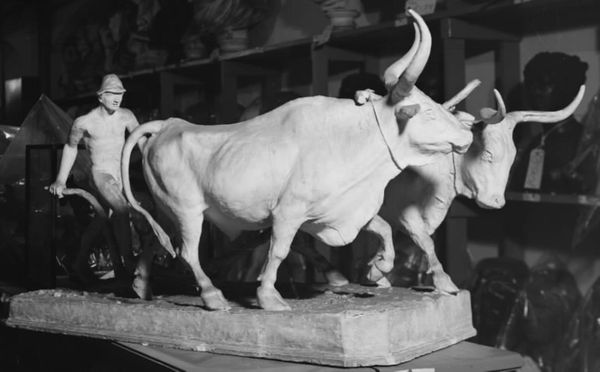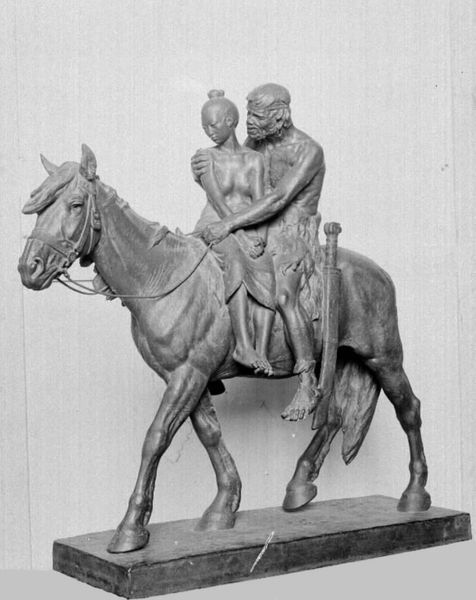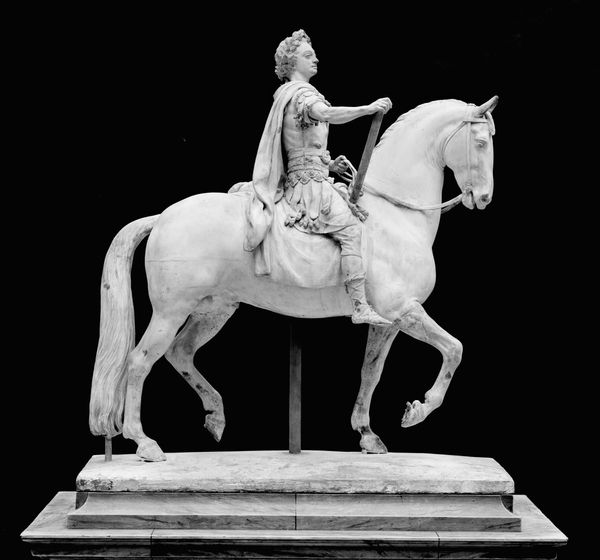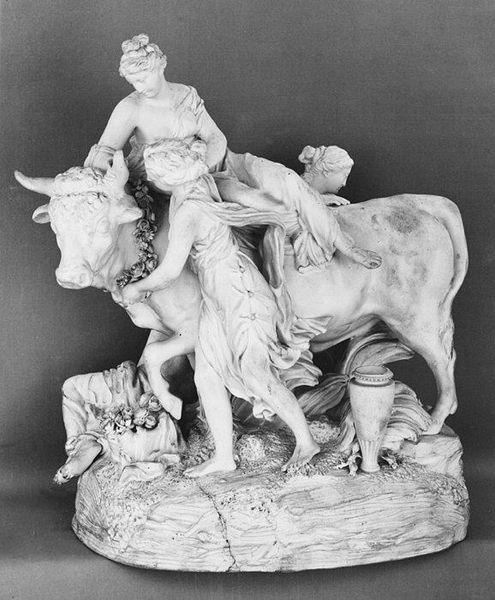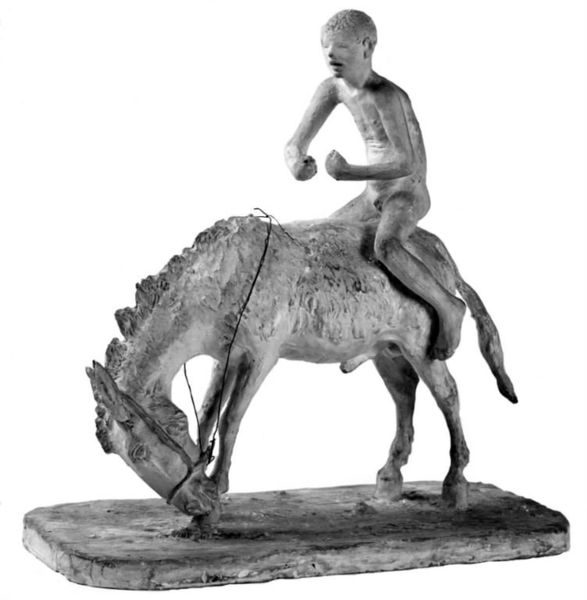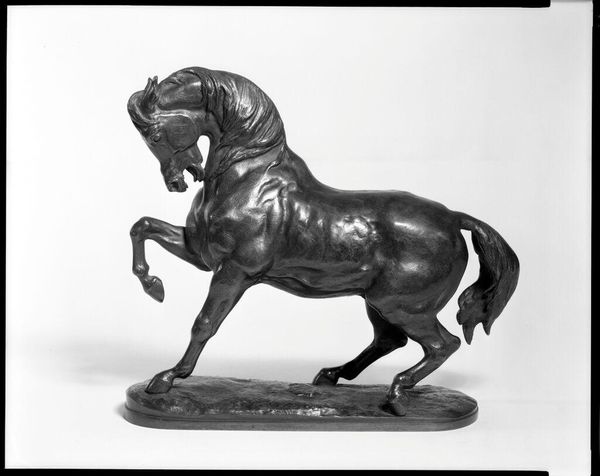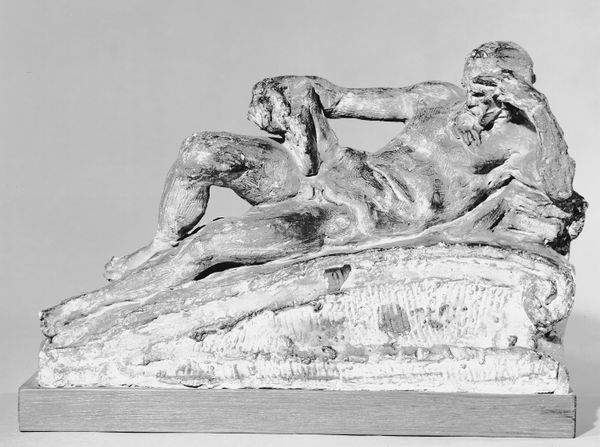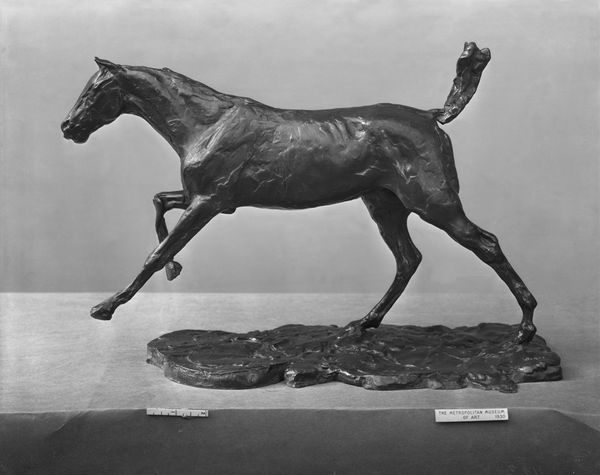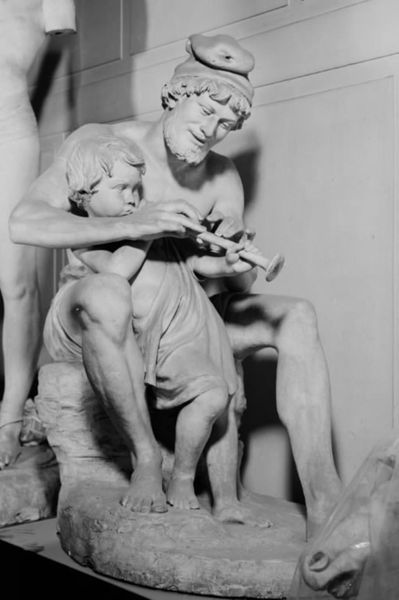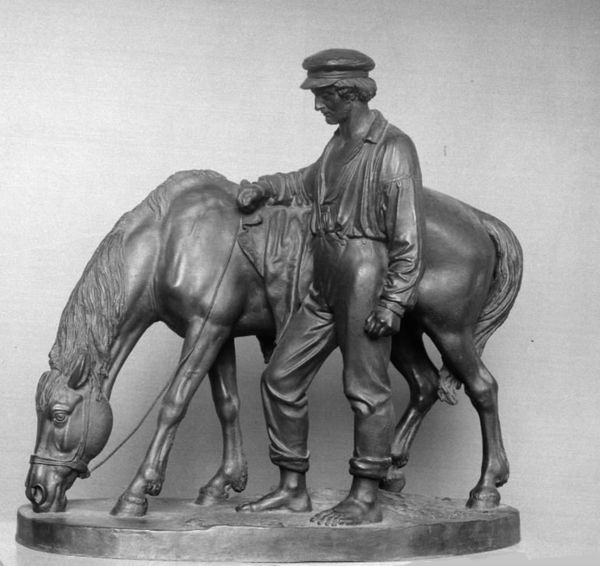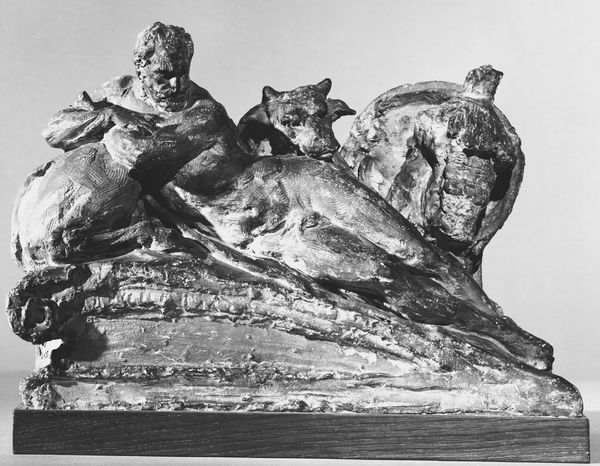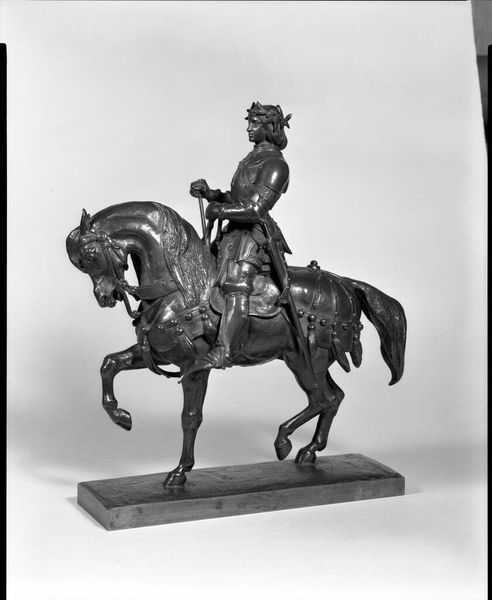
sculpture, wood
#
portrait
#
sculpture
#
figuration
#
sculpture
#
wood
#
monochrome
#
realism
#
statue
#
monochrome
Dimensions: 77 cm (height) x 47.4 cm (width) x 84 cm (depth) (Netto)
Curator: Upon first viewing, what strikes you about this wood sculpture? To me, it seems to possess a peculiar somber and subdued disposition. Editor: Indeed. There’s an almost dreamlike quality. "En karl, der vander en hest," which translates to "A man watering a horse," made by O. Evens around 1853, shows exactly that. A man watering his horse. Several sculptures of men with their horses appear. They almost blend together as though caught in time. Curator: Absolutely. What draws my attention is how this rather ordinary act, men and their horses drinking, can subtly illustrate a powerful commentary on class and labour of 19th century Denmark. It emphasizes how our relationship with animals like horses, has supported agricultural work and trade, forming communities but equally enabling systemic power structures. These horses and men represent both labour and subjugation. Editor: From a formal perspective, the monochromatic palette creates an intense focus on form and texture. Note the artist’s dedication to representing the animal's musculature and its connection to the male rider on its back. Notice also the deliberate choices in composition, where each figure seems interconnected through similar stances to enhance the artwork's meaning, thereby inviting viewers to actively explore beyond its overt representational qualities. Curator: It’s fascinating how Evens subtly explores themes of subservience through the riders to the horses and perhaps even in their service to each other, speaking about themes of mutual dependency and a silent reflection on their own role within a wider social hierarchy. This approach promotes an empathy that highlights a shared human experience amidst societal constraints. Editor: It serves as a reminder that form and technique work in concert to shape our perception and that close visual interrogation can expose multifaceted readings in artworks like this piece by Evens. Curator: Yes, indeed. Ultimately, I find it striking how an artist can, through the depiction of such daily acts, confront issues around social identity. Editor: A testament to how attentive and persistent observations result in thought-provoking discoveries.
Comments
No comments
Be the first to comment and join the conversation on the ultimate creative platform.

